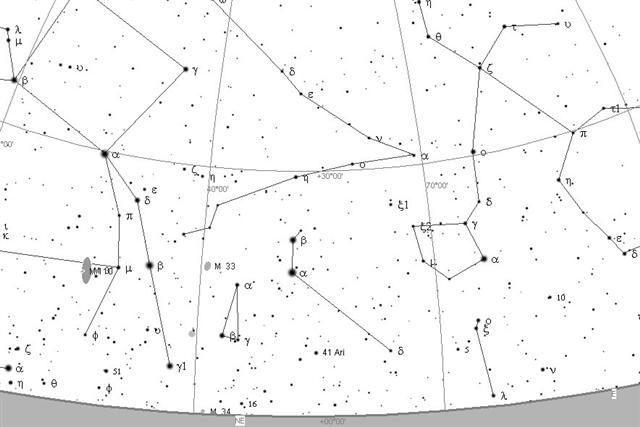|
4. The 2nd station is Bharani (cfr in the chapter Botein): ... Bharani ... is the second nakshatra in Hindu astronomy, corresponding to 35, 39, and 41 Arietis. In Jyotisha, Bharani is ruled by Shukra (the planet Venus). Also, it is classified as a Cruel or Active nakshatra, meaning that, under electional astrological beliefs, works of a harmful or deceptive nature are best conducted while the moon is Bharani. Bharani is seen as being under the domain of Yama, the god of death or Kālī. The symbol of Bharani is the Yoni, a representation of the female sexual organ ... This was the view in the northeast of the evening sky on Easter Island (from Hanga Roa at sea level) in 1870 (November 1 at 4 a.m.):
The outline of Musca Borealis is not shown but Bharani (41 Ari) is the dot at center bottom. Above are α, β, and δ Arietis, where β is Sheratan. To the right above Sheratan is Mesarthim (not labelled in the picture). Higher up is Pisces. To the right is Cetus with the earliest part of Taurus below its 'head'. To the left is Andromeda with the Pegasus Square. Sirrah (α Andromedae) is close to right ascension 0h.
If 28 lunar stations were used to describe the positions of Sun we can assume there were 364 / 28 = 13 nights for each station and this seems to agree with the G text:
|
|||||||||||||||||||||||||||||||||||||||||||||||||||||||||||||||||||||||||||||||||||||||||||||||||||||||||||||||||||








